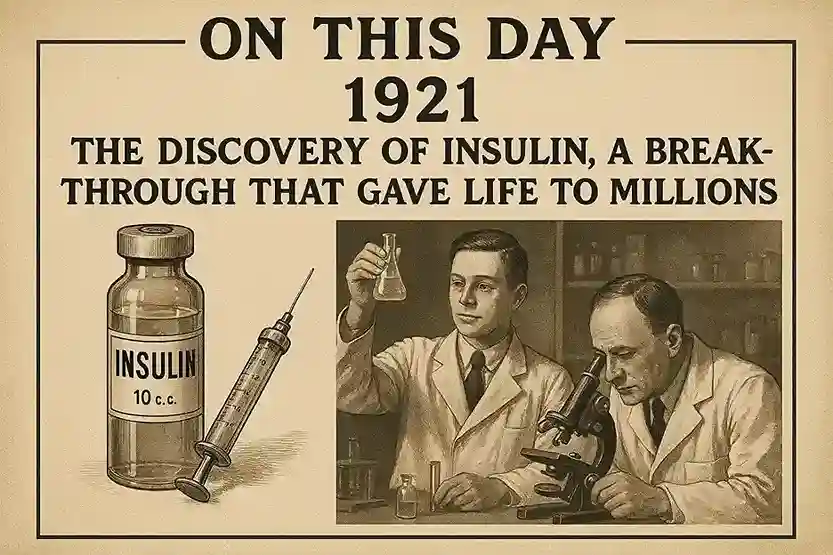On This Day, 1921: The Discovery of Insulin, a Breakthrough That Gave Life to Millions

On This Day, 1921: The Discovery of Insulin, a Breakthrough That Gave Life to Millions
TORONTO, Canada – On this day, July 27, 1921, a team of Canadian researchers at the University of Toronto announced a discovery that would fundamentally change the course of medicine and offer a beacon of hope to millions. They had successfully isolated a pancreatic hormone they called "insulin," a breakthrough that transformed Type 1 diabetes from a swift and certain death sentence into a manageable condition.
Before this discovery, a diagnosis of Type 1 diabetes was terrifying, especially for children. The only available treatment was a "starvation diet" that could, at best, prolong life by a year or two. The body's inability to process sugar led to a slow, inevitable wasting away.
The breakthrough came from a small team led by surgeon Dr. Frederick Banting and his student assistant Charles Best, working in the laboratory of Professor J. J. R. Macleod. They successfully extracted the hormone from the pancreas of dogs. Their experiments proved that injections of this extract could drastically lower blood sugar levels in diabetic dogs.
Working with biochemist James Collip, the team soon developed a purified extract safe for human use. In January 1922, a 14-year-old boy named Leonard Thompson, who was dying from diabetes, became the first person to receive a successful injection of insulin. His life was saved, and the world of medicine was changed forever.
The impact of this discovery was immediate and profound. For their work, Banting and Macleod were awarded the Nobel Prize in Medicine in 1923. In a remarkable act of generosity, Banting shared his prize with Best, and Macleod shared his with Collip. The team sold the patent for insulin to the University of Toronto for just $1, declaring that "insulin belongs to the world."
Today, over a century later, this discovery continues to be a lifeline for over 400 million people living with diabetes globally. In India, often called the "diabetes capital of the world," this breakthrough from 1921 remains a cornerstone of daily life and survival for countless families. The announcement on this day wasn't just a scientific milestone; it was a gift of life to the world.


